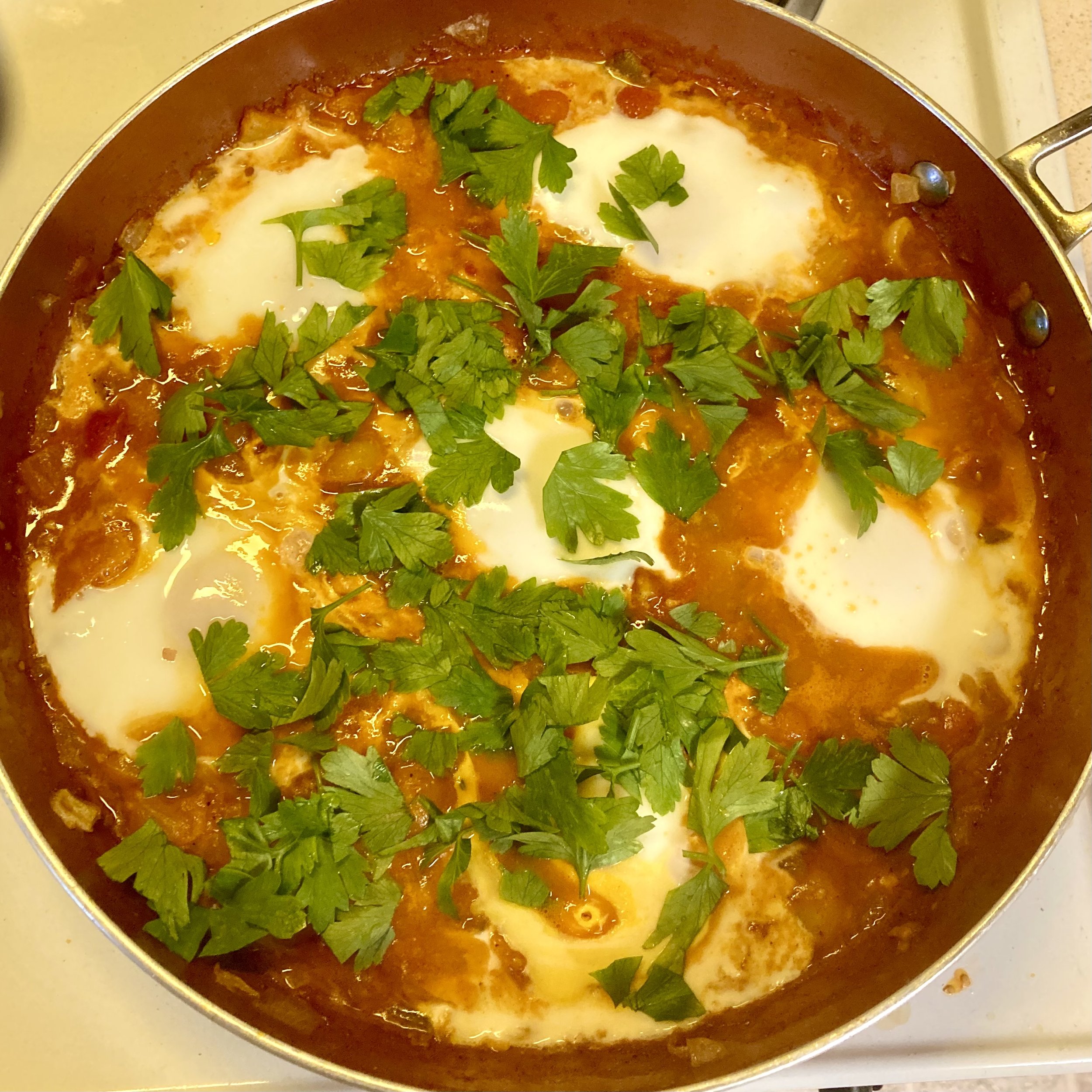Shakshuka is a traditional breakfast dish from the Mediterranean. This can be baked in a cast iron skillet in the oven, or simply made in a large frying pan (with a lid) on the stove.
I like to make this as a quick mid-summer supper. The base ingredients are tomatoes, onions, and eggs, and from there you can add other ingredients and spices as you like.
INGREDIENTS
3 Tbsp oil
1 onion, diced (or use chopped green onions, added at the same time as the eggs)
1 bell pepper, seeds removed, diced
2 cloves garlic, minced (or substitute one bunch garlic scapes, chopped)
1/2 tsp turmeric powder
1/2 tsp cumin
1/2 tsp ground coriander
1/2 tsp paprika
dash cayenne powder or chili powder or pinch red pepper flakes (optional)
Salt and pepper to taste
6 cups diced fresh tomatoes or cherry tomatoes
1/2 cup tomato sauce (or leftover spaghetti sauce, or marinara sauce, etc) (optional)
1/4 cup chopped parsley (or substitute cilantro or mint)
6 eggs
DIRECTIONS
Heat oil in frying pan. Add bell pepper and onion and cook 5 minutes or until onions are translucent. Add garlic and spices and cook another minute. Add tomatoes and tomato sauce and cook for about 15 minutes to reduce and thicken. Taste and add more spices as needed. Reduce heat to a simmer. Use a large spoon to make 6 evenly spaced indentations in the mixture. Gently crack an egg into each indentation. Cover the pan and cook about 8 minutes, or until eggs are poached to your liking. Sprinkle the chopped parsley on top and serve with toast, pita, naan, or challah bread.
Optional additions: feta or goat cheese, sliced avocado, cooked sweet potatoes, chopped fresh jalapenos, etc






